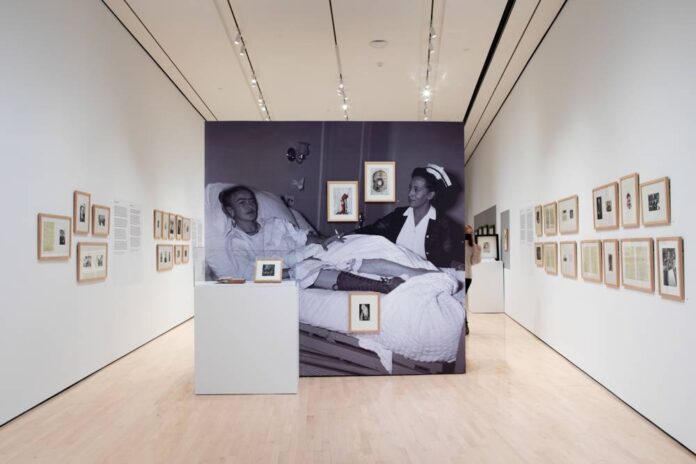The ‘Kahlo Without Borders’ exhibition features archive documents relating to the health of Frida Kahlo. — Picture courtesy of the Eli and Edythe Broad Art Museum at Michigan State University and Eat Pomegranate Photography via ETX Studio
Follow us on Instagram, subscribe to our Telegram channel and browser alerts for the latest news you need to know.
NEW YORK, May 23 — Disabled for life after contracting polio at the age of six, Frida Kahlo made her suffering a driving force in her creation. Her pain, both physical and mental, is reflected in the 143 paintings she left behind. Now, the American museum, the MSU Broad examines the Mexican artist’s relationship with medicine through the exhibition, “Kahlo Without Borders.” This retrospective is curated by the director of the MSU Broad Museum, M?nica Ram?rez-Montagut, together with Javier Roque V?zquez Ju?rez and Cristina Kahlo, the painter’s grand-niece. It looks in detail at the life of Frida Kahlo, from the behaviour of her husband Diego Rivera to the health problems she suffered throughout her life.
In 1925, the 18-year-old Frida was seriously injured in a bus accident. She suffered multiple fractures that incapacitated her for many months and forced her to wear an orthopaedic corset. She was operated on about 30 times until her death in 1954, condemning her to become acquainted with medicine as a patient, rather than as a scientist, as she had dreamed during her childhood.
For the first time, the “Kahlo Without Borders” exhibition presents to the public a series of archive documents relating to the health of Frida Kahlo. Among them are clinical records, as well as letters that the painter wrote, for more than a decade, to Leo Eloesser, a thoracic surgeon who later became her trusted medical advisor. Other missives on display are addressed to her former lover, Nickolas Muray, as well as to her sisters and friends.
For M?nica Ram?rez-Montagut, these documents help portray Frida Kahlo in a new light. “I think it’s important that we challenge the narrative of ableism and [tendency to] paint Frida as a film character that’s almost perfect,” she told The Art Newspaper. “She had a tremendous support system, and for all of us to acknowledge that community is important. In many of these objects, you can see that Frida’s doctors were concerned about her being in pain and not having any funds.” The artist even paid tribute to some of them during her career. She portrays herself, in a wheelchair, at the side of one of her doctors in Self-Portrait with the Portrait of Doctor Farill. “[In this exhibition,] we revisit the tremendous respect and appreciation Frida Kahlo had for her healthcare providers, a roster of doctors and nurses who are now recognised, giving them due visibility,” said M?nica Ram?rez-Montagut in a statement. The exhibition “Kahlo Without Borders” runs until August 7 at the MSU Broad Museum, located on the campus of Michigan State University, USA. — ETX Studio


